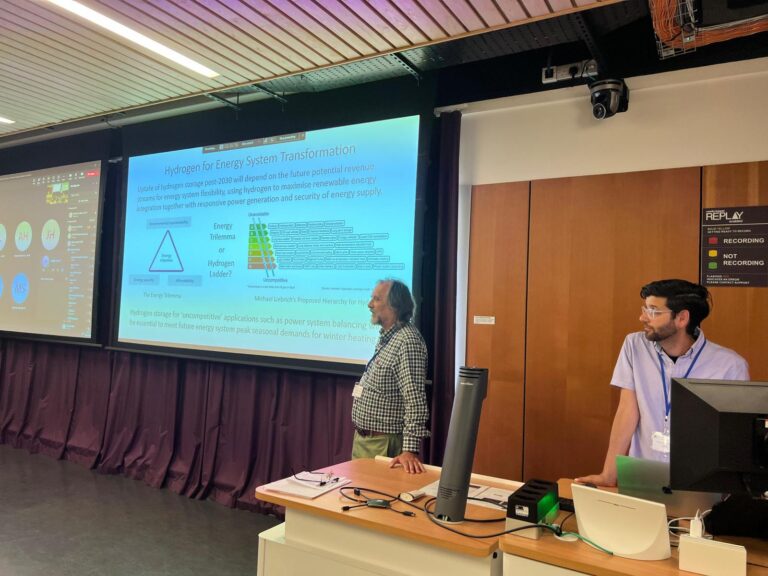 Shifting to hydrogen is a major part of the energy transition, Professor Stuart Haszeldine told the HyStorPor final event conference last week.
Shifting to hydrogen is a major part of the energy transition, Professor Stuart Haszeldine told the HyStorPor final event conference last week.
More than 70 delegates gathered for the event, organised by Scottish Carbon Capture and Storage, at the Edinburgh Climate Change Institute on July 12 and were joined by a further more than 60 participants online.
HyStorPor has been investigating subsurface geological storage of hydrogen in porous media.
“When we started three and a half years ago people questioned why we were looking at hydrogen storage in porous media,” said Prof Haszeldine. “Sentiment changed pretty rapidly. The project has benefited from leadership by Dr Katriona Edlmann and Dr Mark Wilkinson; and has been spectacularly successful in publishing journal papers – 34 in total covering a huge range of output with a strong international reach.”
Being able to store large amounts of hydrogen is key to the energy transition and to the move to renewable sources. When electricity demand is low, wind and solar power can be converted into hydrogen and stored, before being drawn down and turned back into energy when demand is high.
At present, we are storing very little power – just 3GW worth, a number which will need to rise to 20GW by 2030 and 30GW by 2040, said Prof Haszeldine. But we also need to plan for multi-week periods when wind energy output is small. That means storing 60-120 TWhr of energy for the UK. That’s a huge amount and way beyond the present 0.03-0.3 TWhr so that batteries or pumped storage have tiny reserves. That’s why we calculate that hydrogen storage will be essential.
As a result of the HyStorPor project, geological aspects of site selection are much more clearly understood, he said. The project’s research suggests that storage reservoirs hotter than 122 C or with salinities above 5.1 M NaCl equivalent will be less favourable to microbial growth – and so will be favoured for hydrogen storage. No significant geochemical reactions of porous reservoir rocks or overlying seal rocks have been observed in our reactive experiments. Calculations indicate that the caprock will retain a thicker column height of hydrogen than methane and that this increases with increasing depth, so will securely hold the hydrogen in place. We have identified huge significant storage capacity in depleted gas fields, minimising subsurface competition with other low carbon geoenergy applications such as CCS, heat mining or CAES. Salt caverns in domes and bedded salt also show good promise, and are abundant beneath NW and East England, offshore of Scotland, and in Europe.
Associate Professor Grant Wilson of the University of Birmingham re-enforced the need for immense energy storage with hydrogen in that mix. He noted that in future the UK energy system will need to cope with back-to-back low-wind events, potentially at times of year during the heating season.
“This strongly suggests the need for low-carbon sources of stored energy at a minimum range of 10s of TWhs of electrical energy equivalent to be drawn upon over days to weeks,” he told the conference. “These could be nuclear, interconnections of low-carbon electricity or gas, hydrogen storage within national boundaries, or low-carbon energy imports of some sort via shipping. It’s likely that all of the options will be used to some degree in Great Britain, as a portfolio approach to energy system balancing over days-to-weeks and seasonal timeframes has benefits.”

